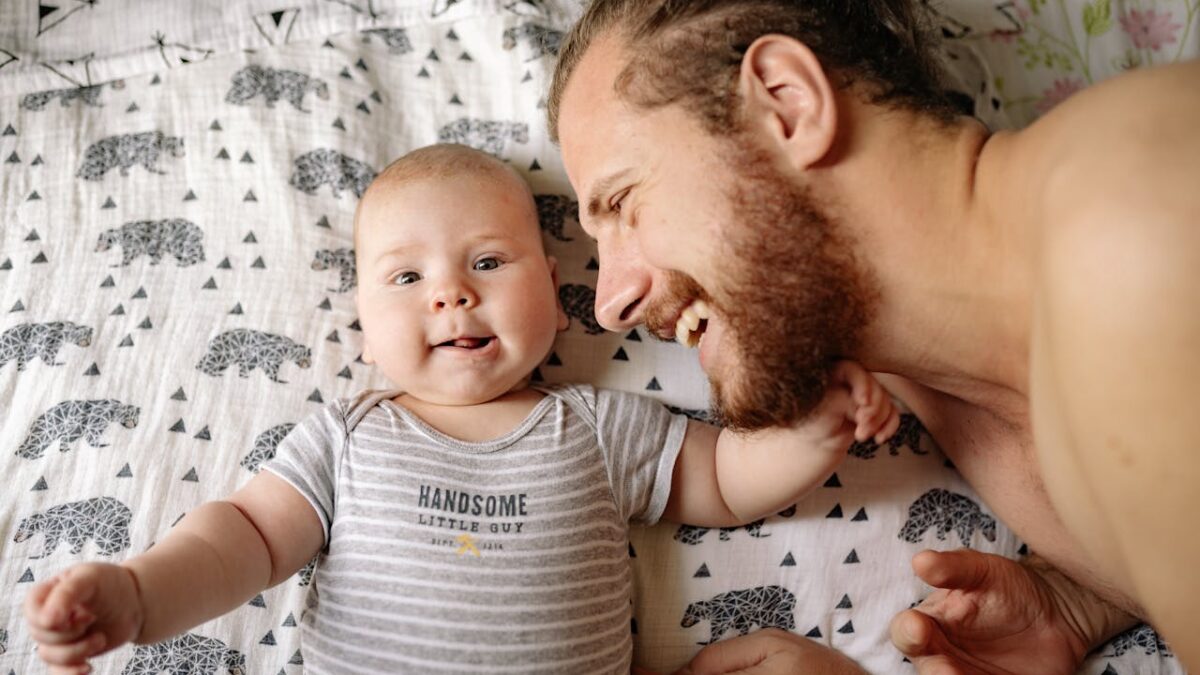
Last week Deadspin ran six sentences and a picture under the headline “Philip Rivers Is An Intense Weirdo.” The final two sentences about the San Diego Charger quarterback were blunt:
And he’s also about to have his seventh kid. There are going to be eight people with Rivers DNA running around this world.
Ah yes. How “intensely weird” it is for an NFL player to be having his seventh kid. Except that it isn’t weird at all for an NFL player to have his seventh kid. It’s only weird for an NFL player to have seven kids with his one wife.
Take former Charger and current New York Jet Antonio Cromartie. He’s fathered at least 12 children with eight different women. In fact, when the Jets picked the cornerback up from the Chargers, they provided him with a $500,000 advance so he could make outstanding child support payments. (You can watch him struggle to name some of his children here.)
Or what about Travis Henry, a former running back who last played for the Denver Broncos? He’s fathered at least eleven children to ten different women. But yes. Philip Rivers is the weirdo.
And yet this procreation — whether the resulting children are raised by their own married parents or not — is the real outlier.
Two stories coming out of the NBA this year are instructive. The first was a supremely weird and horrifying tale of a 2007 contract drawn up by lawyers representing NBA player J.J. Redick and his then-pregnant ex-girlfriend Vanessa Lopez. The document discusses how Lopez’s abortion of an unborn child should be handled, including that Redick was not admitting paternity.
Deadspin wrote it up but did not declare Redick a weirdo for his involvement in this story.
Last month’s New York Times wedding announcement for Faith Rein and Miami Heat player Udonis Haslem revealed that the two have two children and have been together for some 14 years. The Times cheerfully shared the news that earlier in their relationship, they had an abortion because, well:
“I am not a huge fan of abortion, but we both had sports careers, plus we could not financially handle a baby,” said Mr. Haslem, noting how he struggled with supporting Kedonis, the son he had in high school, who is now 14 and who lives with his mother.
“Udonis appreciated that I was willing to have an abortion,” Ms. Rein said. “I found him caring, supportive, nurturing and all over me to be sure I was O.K. I saw another side of him during that difficult time and fell deeply in love. He had a big heart and was the whole package.”
So is it weird that Haslem “appreciated” his girlfriend having an abortion? No, not at all. In fact, the two were widely praised for sharing this story.
In ESPN The Magazine’s Aug. 19 issue, Philip Rivers was asked four questions. The final question:
Six kids? Regardless of your profession, it’s impossible to be a good parent to six kids. Not enough hours in the day.
He answered:
It’s a two-year rotation: Once the diapers come off of one, we usually have a newborn. And we have another one on the way, due in October. I help when I can, but my wife, Tiffany, is the key. My big, growing family keeps everything balanced and grounded. My oldest is 11 now, and the kids are getting into football. They’re Daddy’s biggest fans, and they don’t get on you as bad as most fans. If you throw an interception, they still love you.
Great answer — but what kind of question is that? Seriously. Who asks a question like that? And who, knowing anything about human flourishing throughout history, would think that it’s impossible to be a good parent to six kids? Since when did having kids become something that Americans irrationally fear and loathe?
The media remind us regularly that the most important cultural value relative to family life is what’s euphemistically called “choice.” The choice of whether to have kids or not is held so sacrosanct that our laws permit the decision to be made many months after a new human life begins. Some even advocate extending the choice to a period of time after birth. So why the weird reaction to people receiving children as a blessing instead of fighting them tooth and nail with hormones, chemicals, surgery and scissors? Do we need some remedial courses in how babies are made? It’s entirely natural, of course, for babies to be conceived when men and women have sex. Treating the entirely expected procreation of children as something to be avoided at all costs — and an unspeakable atrocity if one has, say, three children already — would be weird even if our culture weren’t obsessed with sex at all times, in all places, in every context, at every moment.
Patriarchs of Fecundophobia
In the Washington Post last year, Lisa Miller sneered that Republican candidates who had more than a couple children were showcasing their “smug fecundity” in their family photos. Miller said that those women who aren’t in a constant battle to keep their wombs empty are putting “their natural fertility first — before their brains, before their ability to earn a living, before their independence — because that’s what God wants.”
There is much more than a whiff of the misogyny in denigrating mothers of multiple children as brainless, in stating that mothers who are homemakers are inferior to those who “earn” their living, or in attacking women for prioritizing fertility above independence. It’s not just that nobody on planet earth could be truly independent — which is to say completely self-reliant or free of any other human support. It’s not just that we each depended on others from the moment of our conception to birth, but all of society is comprised of individuals who work with each other and depend on each other throughout their lives. Or healthy societies are, at least. It may be impolitic to suggest that men and women are in any way different, science be damned, but many women have a particular specialty in cultivating relationships and family. To denigrate women who acknowledge and accept this as a good thing rather than fight against it is not exactly life-affirming.
But that’s just one example of media promulgation of the fear of children and fertile women. Let’s just revisit a few of the other media highlights over the last couple of years that suggest a problem:
- When State Sen. Wendy Davis filibustered a piece of legislation supported by most Texans that would protect unborn children who had made it to five months’ gestation, she was feted on every news network and in the pages of most newspapers. Media outlets are still highlighting what shoes she wore, while avoiding mentioning anything about late-term abortion.
- When the Komen Foundation tried to extricate itself from funding the $1 billion Planned Parenthood organization, the media reacted with shock. Komen is focused on fighting breast cancer. It turned out that Planned Parenthood, which provides more than 300,000 abortions each year in the United States alone, doesn’t perform a single mammogram. Komen was losing pro-life donors who didn’t want to subsidize the abortion giant. But the media was so appalled that Komen would stop funding Planned Parenthood that it ran breathless news reports until Komen relented. If Komen had to be mortally wounded to send the message that no one will ever be allowed to stop funding one of the world’s largest abortion providers, so be it.
- On the other hand, when the Obama Administration developed a rule requiring virtually all religious employers to provide insurance plans that provide contraception, abortion drugs and sterilization at no cost to the employee, the media showed a curious lack of interest in complaints. The media portrayed the fight against the rule as a “war on women,” even though it was the government that said everyone from the Little Sisters of the Poor to Tyndale Bible Publishers weren’t religious enough to avoid the regulation. They’re just two of the more than 200 plaintiffs who are fighting the mandate on religious liberty grounds, to little attention from the media. By contrast, who could forget the media’s months-long love fest with Sandra Fluke, a contraception activist who was a major part of the manufactured “war on women” meme?
- Or what about the media’s downplaying of the Kermit Gosnell trial? He was the abortionist who ended up being convicted for the deaths of some of the children and mothers whose lives ended at his filthy, urine-soaked clinic. And yet the media had to be shamed into reluctantly covering the trial — just a year after Komen’s decision to stop funding an abortion provider was national news for weeks.
It’s almost as if there is a pattern in how the media treats stories about women and their wombs. “If men could get pregnant, abortion would be a sacrament,” activist Florynce Kennedy famously said. But the fact is that, as far as the media are concerned, abortion is a sacrament. And keeping the womb empty at all costs during all, or nearly all, of one’s fertile years is the sine qua non of modern American womanhood. Woe to the woman who “chooses” otherwise.
A comedian on Twitter recently mocked a family with a large number of kids. The replies to the tweet were even more disturbing, including references to “mindless bodies” and how the “Mom looks surprisingly good, for a puppy mill.” One commenter said the family made the case “for oral/anal sex rather than vaginal.”
This is what fecundophobia looks like.
Fear Of Fertility Hits Portland
In August, I visited the Hawthorne Street Fair in Portland, Oregon, and had a blast. A parade of Occupy protesters marched down the street, calling on everyone to vacate their houses and live outside — and to turn their houses into houseplant sanctuaries. I hadn’t been at the street fair more than five minutes before I was asked to sign something in support of Planned Parenthood. Then I saw the NARAL Pro-Choice America booth, encouraging activism in support of abortion rights. A few blocks later I was thankful to see enthusiastic signage in support of adoption. It turned out to be about pet adoption. By the time I got to the tent with a sign that said “Thank you for not breeding,” I’d had enough.
We met some friends and shopped for vinyl records. I procured a great PJ Harvey bootleg and the late, great Poly Styrene’s “Generation Indigo”. The title track includes the verses:
A brand new generation
Bring out the transformation
Endless possibilities we know
From generation indigo
A brand new generation
To save us from extinction
Let’s give it up, give it up
For generation indigo
Leave it to a punk-rock feminist activist to point out an upside of fertility. A brand new generation to save us from extinction — allowing the children that naturally result from boot-knocking to live has other benefits.
In “What To Expect When No One’s Expecting,” Jonathan Last discusses the reality of American’s declining fertility rate. His book isn’t preachy. In fact, it’s a sympathetic take on why people aren’t having as many kids (the answers range from the ubiquity of college and the delay of marriage to car seat laws and the birth control pill). He flat out says “It would be crazy to have children if they weren’t so damned important.” On that point, he explains:
The more pressing question you probably have is: Why should we care? After all, America seems pretty crowded as is. Why should it matter if, in a few decades, we don’t have as many people clogging up the freeways and malls? The short answer is that sub-replacement fertility rates eventually lead to a shrinking of the population — and throughout recorded human history, declining populations have always followed or been followed by Very Bad Things. Disease. War. Economic stangation or collapse. And these grim tidings from history may be in our future, since population contraction is where most of the world is headed.
When you put it that way, our fecundophobia isn’t nearly so charming.
Follow Mollie Hemingway on Twitter.









